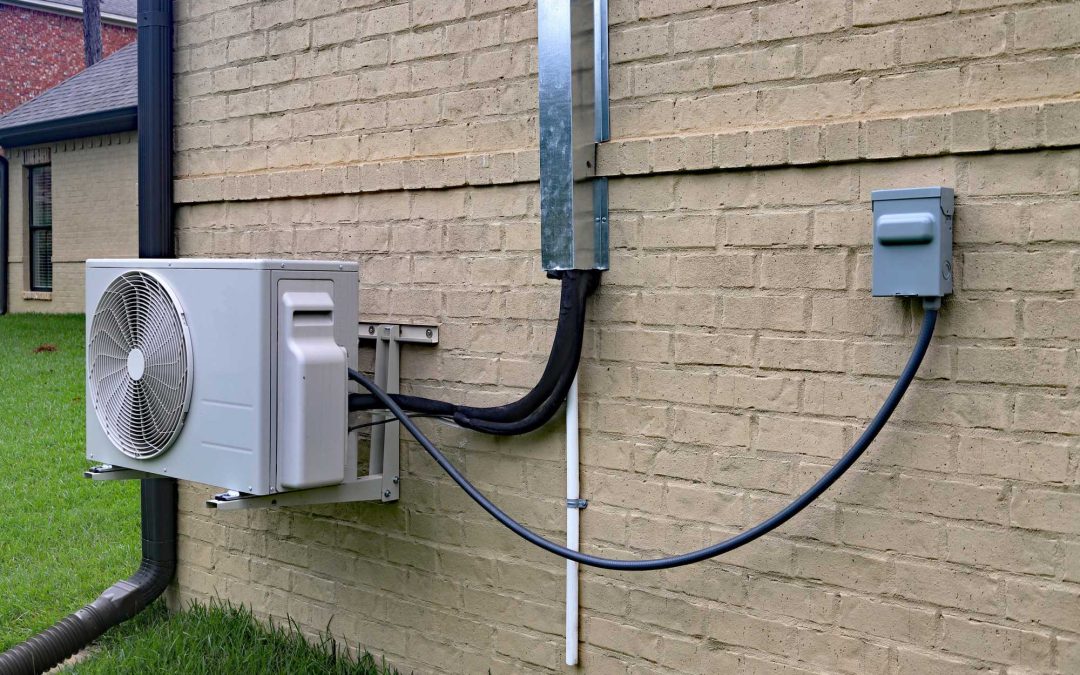Approximately 100 million homes in the U.S. have a central air conditioning system installed. This represents 87 percent of all households. This is a significant increase since 1993 when 68 percent of all households had a cooling system installed.
However, what if you only want to cool a room, or several, in your home, but don’t want to have to worry about installing additional ductwork to do this? Or, maybe you live in an older home that doesn’t have ductwork – at all.
If that’s the case, you aren’t alone.
This is when mini-split air conditioner units come in handy. Keep reading to learn some of the most common questions about ductless air conditioner units and if they are right for you here.
1. What is a Ductless Mini-Split AC Unit?
Ductless mini-split air conditioning units are just as the name implies – it’s a mini version of a split central AC system. While this is true, it doesn’t use ducts to deliver cold air. This means it avoids any energy loss due to leaky ducts.
There are three main parts of a mini-split air conditioner. These include:
- The condenser unit found outside the home
- The blower/evaporator unit found in the room that needs cooling
- A conduit that links the indoor and outdoor unit
These are very small and quiet units. As a result, you have many options when it comes to placement to effectively cool various rooms in the home. These units also have remote controls making them convenient to use.
2. When Would You Need a Ductless Mini-Split AC System?
Since mini-splits don’t require ducts, they require minimal installation. They are also great for cooling things, such as:
- Garages
- Home renovations
- Sunrooms
- Home additions
- Zoning (ideal for homes where the upstairs is hotter during the summer)
If you need area specific cooling, then a ductless mini-split AC system is a smart option.
3. Do You Need a Ductless Unit in Every Room of Your Home?
This is not necessary. You won’t have to have a single indoor unit for each room in your house, but the outdoor unit can attach to several wall-mounted units inside. In the majority of homes, this means having indoor units in all the main living areas.
For larger homes, where several interior units are needed, you may have to have a second outdoor condenser unit to effectively cool the space.
There are many homeowners who use these systems for zoning their homes. With zoning, you can determine which areas require more cooling or heating. For example, you can make your bedroom five degrees cooler than the living room, even though they use the same system.
A ductless system is also ideal for a home addition. Instead of having to extend the current ductwork you can just add a mini-split system in the new garage apartment or guest room.
4. Can Window AC Units be Used for the Same Purposes a Mini-Split AC System is?
In some cases, the answer to this is yes. Both types of units can be used for cooling one room without any ductwork.
While this is true, a mini-split system can add more evaporator units (usually up to four) to a single condenser unit. This means that, technically, it can cool as many as four rooms.
The mini-split systems are also much more energy efficient than a window unit, and they typically last longer.
The main selling point of a window AC system is that they are affordable. However, they may also be a safety hazard because burglars may be able to access your home by removing the window unit.
5. Is it Easy to Install a Mini-Split Ductless System?
The answer to this question is a bit more complicated than others. While this isn’t a project that homeowners should attempt to do on their own, the process isn’t overly complex, either.
While this is true, it is relatively easy for a professional to handle the installation process. The installer will determine where to put both the interior and exterior unit, and then drill a hole that’s approximately three-inches in the wall for the needed conduit.
Also, the conduits are available in several lengths. As a result, you can easily cool a room at the front part of your home with your inside evaporator unit, and the outside condenser unit can remain in the back of your home, out of sight.
Another reason you should avoid a DIY installation is that you need a professional to help you determine what size mini-split you need to install. Getting the wrong size can create several issues.
If the unit is too small, then it is going to struggle to adequately cool the space. In the long-term, this is going to increase your energy costs.
However, if the system is too big, then it is going to short cycle. This means it will cool the home too quickly, wasting energy. It won’t be able to dehumidify the room, either.
Should You Install Ductless Air Conditioner Units?
As you can see, there are more than a few benefits offered by installing ductless air conditioner units. If you are thinking about this installation, then contacting the pros for help and advice is a good course of action.
Our team is dedicated to helping ensure our customers have a properly cooled and heated home, for an affordable rate. If you want to learn more about your HVAC system, be sure to read our blog on common air conditioning problems and how to fix them.





